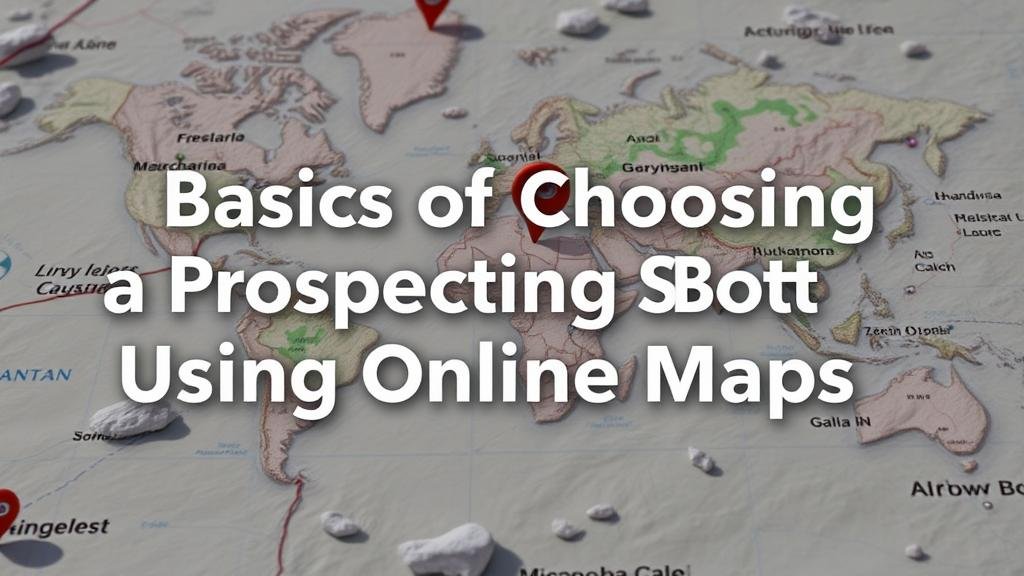The Basics of Choosing a Prospecting Spot Using Online Maps
The Basics of Choosing a Prospecting Spot Using Online Maps
In the modern landscape of business development, effective prospecting is crucial for success. With the rise of technology, particularly online mapping tools, identifying promising prospecting locations has become more streamlined and efficient. This article will explore the fundamentals of using online maps for this purpose, providing actionable guidance and real-world applications.
Understanding the Importance of Location
The choice of a prospecting spot can significantly impact the effectiveness of outreach efforts. Research indicates that location can influence consumer behavior, with a 2022 study showing that 70% of purchasing decisions are affected by location factors. So, selecting an optimal area for prospecting can enhance the chances of successful engagement and conversion.
Key Factors to Consider
When selecting a prospecting spot using online maps, several critical factors must be taken into account:
- Demographics: Understanding the demographic breakdown–age, income, and education level–of a given area is essential for tailoring your outreach efforts.
- Competition: Analyzing the saturation of competitors in your chosen spot can help gauge the potential viability of your prospecting strategy.
- Accessibility: The locations accessibility, such as foot traffic and public transport availability, influences the likelihood of consumer interaction.
Utilizing Online Mapping Tools
Numerous online mapping platforms facilitate the selection of effective prospecting spots. Tools such as Google Maps, MapQuest, and specialized GIS (Geographic Information System) applications provide robust functionalities. Here’s how to leverage these tools effectively:
1. Conducting Area Analysis
Online mapping tools allow users to analyze geographic areas by zooming in on specific locations. For example, Google Maps provides a Street View option, offering an on-the-ground perspective of the area, making it easier to assess the environment and identify potential customer engagement points.
2. Analyzing Demographics
Platforms like Esri’s Business Analyst Online pull demographic data directly into mapping interfaces. A user can examine attributes such as population density, household income, and consumer behavior. This data is invaluable when deciding where to direct sales efforts. For example, a company selling high-end products may prioritize wealthy neighborhoods based on income statistics.
3. Evaluating Competition
Many mapping tools also display business listings, enabling users to identify nearby competitors easily. For example, a simple search on Google Maps for “coffee shops†in a specific area will reveal existing businesses. This visualization assists in understanding whether a market is oversaturated or ripe for entry. Research analysis shows that locations with fewer competitors often yield higher customer conversion rates.
Case Study: Successful Prospecting Strategy
Consider the case of a tech startup aiming to expand its service offerings in urban areas. By utilizing online maps to analyze both demographic data and competitor locations, the company identified a growing neighborhood with a high concentration of young professionals. Through door-to-door outreach and targeted advertisements, they successfully gained initial clients, leading to a 30% increase in their customer base within six months.
Actionable Takeaways
To effectively choose a prospecting spot using online maps, consider following these actionable steps:
- Use online mapping tools to assess demographic data and competition.
- Analyze the accessibility of chosen locations to maximize outreach potential.
- Regularly revise your prospecting strategy based on market changes and available data.
By systematically employing these strategies, businesses can enhance their prospecting efforts, leading to more significant growth and client engagement. In today’s data-driven environment, informed decision-making is key to maintaining a competitive edge.



